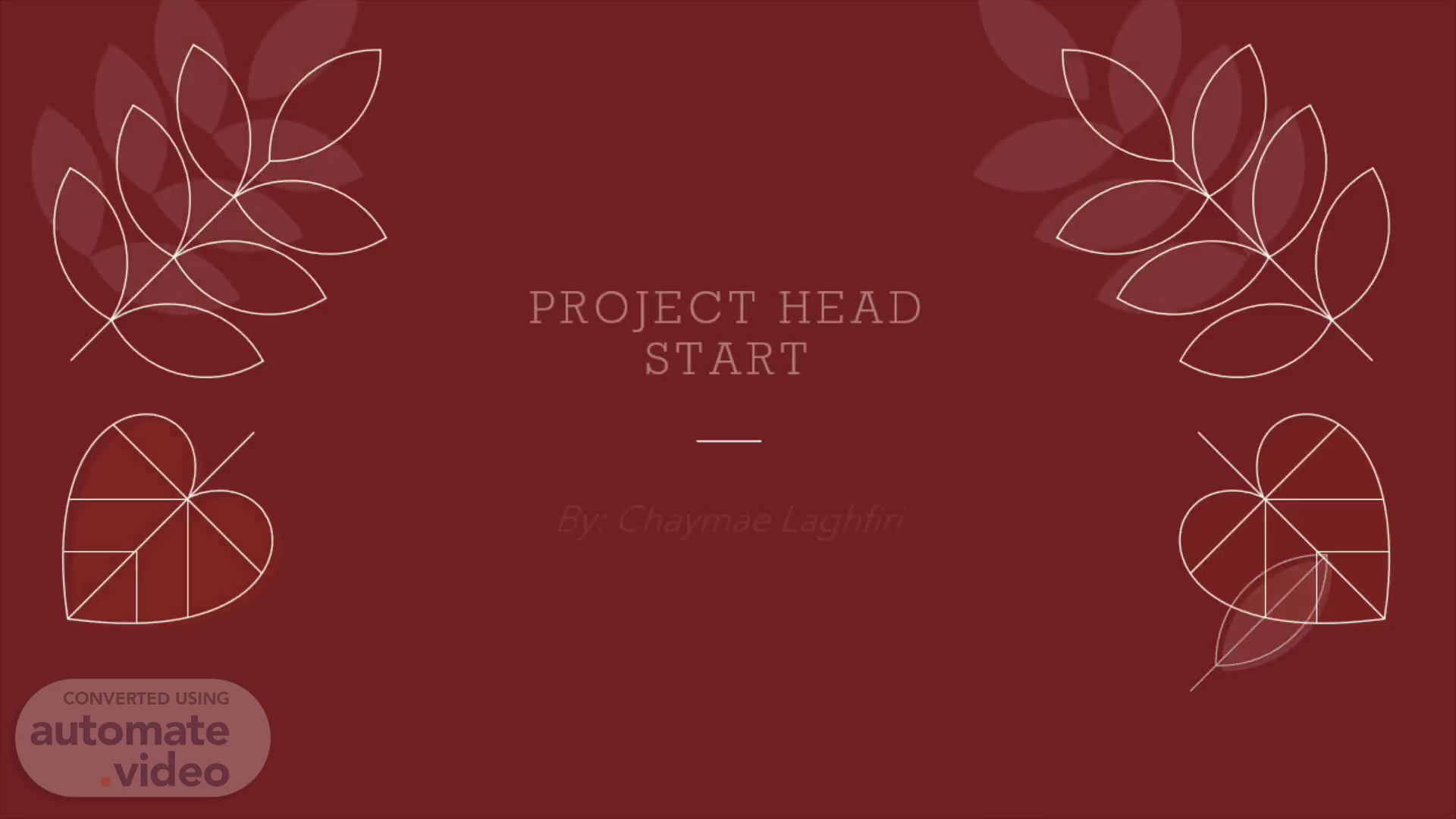Scene 1 (0s)
Project Head Start. By: Chaymae Laghfiri.
Scene 2 (9s)
What is Head Start and early head start?. Head Start : A comprehensive early childhood development program primarily serving low-income preschool-age children and their families Serves children between 3 and 5 years old. Children that enroll in Head Start are: More likely to graduate from high school and attend college Have improved social, emotional, and behavioral development Are better prepared to be parents themselves than similar children who did not attend the program Early Head Start: was established during the 1994 Reauthorization of Head Start. Early Head Start is a comprehensive early childhood program serving primarily low-income children prenatal to age 3, pregnant women, and their families. support pregnant women and families with children younger than age 3 years, Children enrolled in Early Head Start programs: Have significantly fewer child welfare encounters related to sexual or physical abuse between the ages of 5 and 9 than those who don’t attend..
Scene 3 (46s)
When was it found?. It was found in 1964 Project Head Start, launched as an eight-week summer program by the Office of Economic Opportunity in 1965 with the goal of breaking the cycle of poverty through the care and education of low-income children..
Scene 4 (1m 2s)
Founder(s)?. HEAD HEAD sry. President Johnson Lyndon B. declared a "War on Poverty." Soon after, Sargent Shriver , Director of the Office of Economic Opportunity from 1964 to 1968, brought together experts to develop a child development program to help communities meet the needs of disadvantaged preschool children..
Scene 5 (1m 18s)
Funding sources?. Currently the largest federally funded program for U.S. children, in 2020 10.7 billion dollars in funding. - U.S. Department of Health and Human Services, Administration for Children and Families. The U.S. Congress authorizes the amount of federal spending for Head Start each year.
Scene 6 (1m 37s)
Number of people served by the program?. Head Start has served more than 38 million children birth to age 5 and their families. Head Start programs cumulatively served 1,047,000 children ages birth to 5 and pregnant women throughout the 2018–2019 program year. During the 2020-2021 program year: Head Start programs cumulatively served 756,000 children ages birth to 5 and pregnant people throughout the 2020–2021 program year. At the end of the program year, 95% of children had health insurance and were primarily enrolled in Medicaid or the Children's Health Insurance Program (CHIP) program. Children with disabilities made up 13% of Head Start cumulative enrollment. Children with disabilities are those who have special plans under the Individuals with Disabilities Education Act (IDEA). In comparison, about 4% of infants and toddlers and 7% of preschool-age children across the U.S. had identified disabilities in 2019. Head Start serves a greater proportion of children with disabilities than found in the overall population. Among pregnant people enrolled in Early Head Start, approximately 79% received prenatal education on fetal development and 23% had medically high-risk pregnancies. Approximately 59,000 Head Start families received housing assistance, such as subsidies, utilities, and repairs. Approximately 76,000 families, or 11%, received services related to job training and adult education, such as general equivalency diploma (GED) programs and college selection..
Scene 7 (2m 33s)
Socio-demographics of people served by the program?.
Scene 8 (3m 6s)
SOCIO-DEMOGRAPHICS OF PEOPLE SERVED BY THE PROGRAM continued....
Scene 9 (3m 39s)
The mission of head start. Head start was designed to help break the cycle of poverty by providing preschool children of low-income families with a comprehensive program to meet their emotional, social, health, nutritional, and psychological needs. Recruiting children age three to school entry age The goal of head start programs nationwide is to “promote school readiness of children ages birth to five from low-income families by supporting the development of the whole child.” In addition to serving young children, Head Start also provides services and programs for the whole family, utilizing a two-generation approach to pull communities out of poverty..
Scene 10 (4m 9s)
Child developmental concept or theory that relates to project head start.
Scene 11 (4m 42s)
References.
